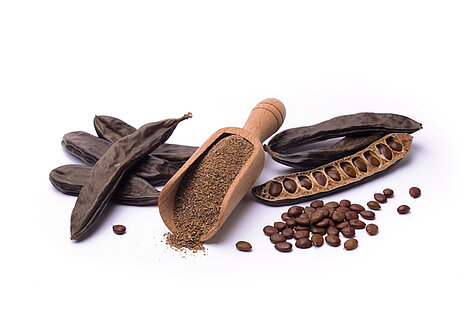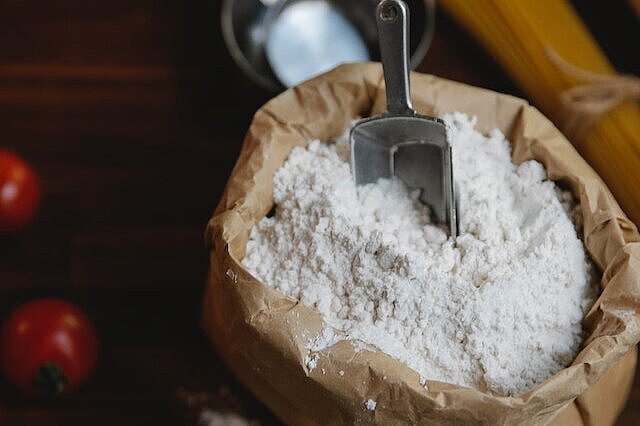Carob flour

Carob flour is a natural product obtained from the fruit of the carob tree. The carob tree is an evergreen tree from the legume family that is found in the Mediterranean region and the Near East. The fruits of the tree have been used since ancient times and have a number of positive health properties. But what exactly is carob flour and how does it affect dogs? In this article, you can find out more about this special ingredient and its advantages and disadvantages.
What is carob flour?
Carob flour is a roasted and micronized flour made from the pitted fruit of the carob tree. There are two types of carob flour: carob powder, which is made from the pulp of the fruit, and carob seed flour, which is made from the seeds of the fruit. Both flours are gluten-free and can be used as a source of carbohydrates.
Carob powder has a sweet taste and a pleasant aroma. It is a low-fat source of carbohydrates and also contains protein and various minerals. Carob powder can be used as a natural sweetener or as a cocoa substitute.
Locust bean gum is also commonly used as a natural food additive under the number E 410. It has a high swelling capacity and can be used as a thickener or gelling agent. Locust bean gum has no taste of its own and can therefore be used in a variety of ways.
What are the benefits of carob bean gum for dogs?
Locust bean gum can have a number of health benefits for dogs. Firstly, it has a positive effect on digestion and can help with diarrhea. The combination of different types of sugar and tannin-containing substances in the carob pulp has a regulating effect on the intestinal flora. The intestinal contents are thus well acidified and the consistency of the faeces is increased.
Carob flour can also lower blood sugar and cholesterol levels and have a weight-reducing effect. This is because carob flour has a low glycemic index and therefore causes blood sugar levels to rise only slowly. It also binds fats in the intestine and prevents them from being absorbed.
What are the disadvantages of carob flour for dogs?
Carob flour has no known side effects or risks for dogs as long as it is fed in moderation. However, care should be taken to ensure that carob meal does not make up a large proportion of the diet, as this can lead to an oversupply of carbohydrates. This in turn can lead to obesity or diabetes.
Care should also be taken not to confuse carob flour with other ingredients that look similar but are toxic to dogs. For example, chocolate or cocoa can be life-threatening for dogs as they contain theobromine, which is toxic to dogs. Therefore, you should always make sure
Carob flour is a flour made from the fruit of the carob tree and can be found in two forms: Carob powder from the pulp and locust bean gum from the seeds. Both are gluten-free. Carob powder has a sweet taste and can be used as a natural sweetener or cocoa substitute. Locust bean gum (E 410) is used as a thickening agent. In dogs, locust bean gum can aid digestion, lower blood sugar and cholesterol levels and help with weight loss. However, it should be fed in moderation to avoid obesity or diabetes. Care must also be taken not to confuse it with harmful ingredients such as chocolate.
If you notice any signs of hypersensitivity or poisoning in your dog, you should see your vet immediately. We are not a substitute for a vet, but we try to be as accurate as possible. Every dog reacts differently and we recommend you get a second opinion or consult your vet if in doubt.
Stay healthy and take good care of your four-legged friend!😊
Similar to Carob flour
Pectin is a plant polysaccharide found in the cell walls of fruit and vegetables. It is a natural gelling agent that is released when fruit is cooked or frozen. Pectin is often used as an additive...
Agar-agar is an extract from red algae, which mainly grow in Asia. It has a gel-like consistency and can be used as a thickening or gelling agent. Agar-agar is tasteless and contains no animal...
Xanthan gum is a thickening agent obtained from the fermentation of sugar by bacteria. It has the property of gelling and stabilizing liquids. This means that it prevents the components of a product...
Guar gum, also known as guaran or guar gum, is a carbohydrate obtained from the seeds of the guar bean. The guar bean is a legume that originally comes from India or Central Africa and is now mainly...



